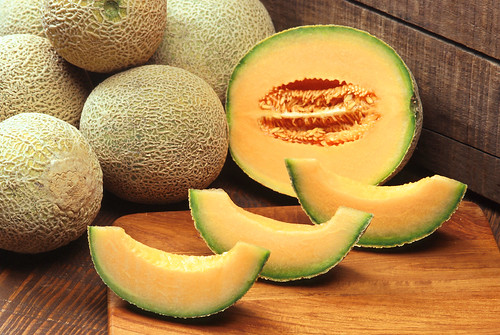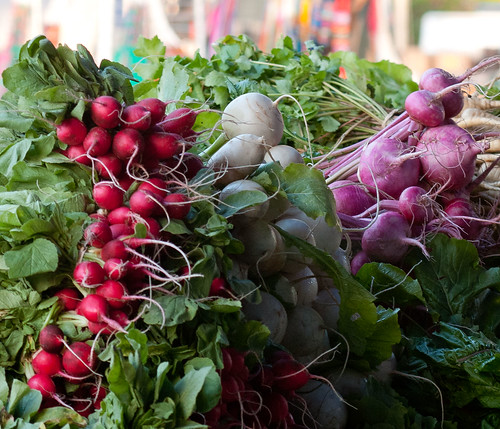
We all have our own methods and traditions for selecting fresh produce, especially as the weather gets warmer and our stores and markets are full of fresh seasonal offerings. Whether it’s smelling the rind or checking the firmness of the skin, these age-old practices are all designed to help pick the winning ingredients for snacks and meals. Last spring, we provided tips for buying artichokes, apricots, broccoli, cherries, and strawberries. This time around, we will focus on some other seasonal favorites.
Whether it is part of a fruit salad or eaten by itself, cantaloupe is always a hit during the summer months. When purchasing a cantaloupe, make sure that its rind is light green or turning yellow. Ripe cantaloupes should yield to light pressure and have a sweet aroma. Most cantaloupes need to be kept in the refrigerator for 2-4 days before eating. Some may prefer to eat their cantaloupes at room temperature, while others like theirs after leaving it in the refrigerator for a few hours.
Another fruit commonly used as a refreshing treat is watermelon. While it may be hard to determine a quality watermelon that is not cut, here are a couple of pointers that may help you out. Look for one with a relatively smooth surface, a rind that has a slight dullness, ends that are filled out and rounded, and an underside (belly) that has a creamy color. From gazpacho to sandwiches, the National Watermelon Board website is your place to find creative watermelon recipes.
A versatile fruit that is often eaten by itself or placed in smoothies or frozen yogurt, blueberries are a popular summer item. Quality blueberries will have a dark blue color with a silvery bloom. You should buy blueberries that are plump, firm, uniform in size, dry, and free from stems or leaves. We recommend that you visit the U.S. Highbush Blueberry Council site for all things blueberry.
If you are looking to add some color to a fresh salad, radishes will do just the trick. Choose smooth, brightly colored medium-sized radishes. Their tops should be green and fresh looking. Avoid radishes with yellow or decayed tops.
A popular item to throw on the grill, purple eggplants should be heavy, smooth, and uniformly dark purple. Avoid those that are soft, shriveled, cut, or have irregular dark-brown spots.
USDA’s Agricultural Marketing Service (AMS) offers inspection services so that wholesalers and retailers receiving fruits and vegetables know a product’s quality. Through our Specialty Crops Inspection Division, AMS employees grade, inspect, and certify the quality of fruits and vegetables. Establishments can use these voluntary, unbiased services to verify that their foods meet desired preferences. Relying on standards that address factors such as color, firmness, and ripeness, our inspectors grade items based on their quality. These services are often used to verify that produce deliveries arrive within acceptable conditions established in contracts.
Whether you are taking a stroll down the produce aisle at your local farmers market or grocery store, AMS encourages you to fill your plate with fruits and veggies this summer. If you are looking for some recipes or nutritional info, we recommend that you check out USDA’s Food and Nutrition Service (FNS) site.




